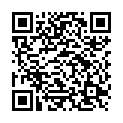|
|
|
| Module code: MST407 |
|
3V (3 hours per week) |
|
3 |
| Semester: 4 |
| Mandatory course: yes |
Language of instruction:
German |
Assessment:
Student assignment
[updated 04.08.2012]
|
MST407 Mechatronics and Sensor Technology, Bachelor, ASPO 01.10.2005
, semester 4, mandatory course
|
45 class hours (= 33.75 clock hours) over a 15-week period.
The total student study time is 90 hours (equivalent to 3 ECTS credits).
There are therefore 56.25 hours available for class preparation and follow-up work and exam preparation.
|
Recommended prerequisites (modules):
MST204 Electrical Engineering
[updated 04.08.2012]
|
Recommended knowledge:
Electronics
[updated 04.08.2012]
|
Recommended as prerequisite for:
MST603 Applied Electronics
[updated 12.08.2012]
|
Module coordinator:
Prof. Dr. Dieter Hornung |
Lecturer: Prof. Dr. Dieter Hornung
[updated 01.10.2005]
|
Learning outcomes:
- Students will be taught how to carry out all operations from the circuit
diagram to the assembled printed circuit board.
- Students will learn how to simulate important functional modules in electronics
and sensor engineering.
[updated 04.08.2012]
|
Module content:
- Circuit board design using the EDA program “ARIADNE”
Schematic module, database module, layout module, CAM module (GC-Prevue)
- Circuit simulation using the simulator program “WinSpice”
Introduction, operating the program, describing circuits (structure of a Spice
file, circuit elements, model statements, subcircuits), control statements,
analysis modes, output modes, simulation of application circuits
[updated 04.08.2012]
|
Teaching methods/Media:
Lectures, CAD problems and exercises integrated into the lectures
[updated 04.08.2012]
|
Recommended or required reading:
- Trainingshandbuch “ARIADNE” und Demosoftware “ARIADNE” Version 8.5, Ulm, Fa. CADUL
- E.E.E. Hoefer / H. Nielinger: SPICE , Berlin, Springer-Verlag
- Mike Smith: WinSpice3 User´s Manual
[updated 04.08.2012]
|


